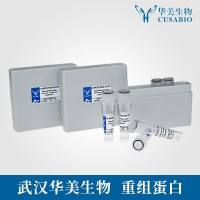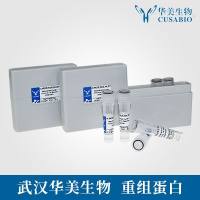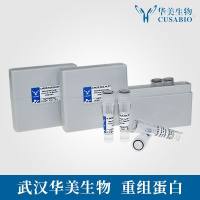Two‐Hybrid Dual Bait System
互联网
- Abstract
- Table of Contents
- Materials
- Figures
- Literature Cited
Abstract
The yeast two?hybrid system, or interaction trap, is one of the most versatile methods available with which to identify and establish protein?protein interactions. The dual bait system is one adaptation of the classic approach. This system facilitates the simultaneous comparison of two distinct baits with one prey. One protein of interest is expressed as a fusion to the DNA?binding protein LexA (bait 1), while a second protein of interest is expressed as a fusion to the DNA?binding protein cI (bait 2). Strains of yeast engineered for screening of these dual baits possess four separate reporter genes. A plasmid expressing an activation domain?fused protein (prey), which can be either a defined protein interactor or a cDNA library, is also expressed to allow dual hybrid?mediated transcriptional activation. Curr. Protoc. Mol. Biol. 86:20.7.1?20.7.32. © 2009 by John Wiley & Sons, Inc.
Keywords: interactions; yeast two?hybrid; interaction trap; interaction mating; increased specificity
Table of Contents
- Introduction
- Basic Protocol 1: Preparation of Baits and Library: Characterizing Bait Proteins
- Basic Protocol 2: Preparation of Baits and Library: Transforming and Characterizing the Library
- Basic Protocol 3: Selecting an Interactor
- Basic Protocol 4: Analysis of Primary Interactors
- Alternate Protocol 1: Screening for Interaction Trap Positives by Yeast Plasmid Recovery
- Support Protocol 1: Colorimetric Assay of β‐Galactosidase and β‐Glucuronidase Activity by Agarose Overlay
- Support Protocol 2: Detection of Bait Protein Expression
- Support Protocol 3: Preparation of High‐Quality Digested Library Plasmid
- Commentary
- Figures
- Tables
Materials
Basic Protocol 1: Preparation of Baits and Library: Characterizing Bait Proteins
Materials
Basic Protocol 2: Preparation of Baits and Library: Transforming and Characterizing the Library
Materials
Basic Protocol 3: Selecting an Interactor
Materials
Basic Protocol 4: Analysis of Primary Interactors
Materials
Alternate Protocol 1: Screening for Interaction Trap Positives by Yeast Plasmid Recovery
Materials
Support Protocol 1: Colorimetric Assay of β‐Galactosidase and β‐Glucuronidase Activity by Agarose Overlay
Materials
Support Protocol 2: Detection of Bait Protein Expression
|
Figures
-
Figure 20.7.1 Outline of the dual bait system and the key control points. An activation domain (AD)‐fused prey interacts with Bait1 (LexA‐fused) to drive transcription of lexAop ‐responsive reporters ( LEU2 and LacZ ), but does not interact with Bait2 (cI‐fused), and thus does not turn on transcription of cIop ‐responsive reporters ( LYS2 and GusA ). As shown in this figure, the cI‐bait, represents a negative control for prey binding; the system can also be configured so prey interacts with only cI‐bait or both baits. To maximize the utility of the system, one can adjust experimental parameters affecting expression of baits and reporter readouts. Points of flexibility in the dual bait‐hybrid system are indicated in the figure by circled numbers and include: (1) varying expression level of baits, (2) varying cellular localization of baits, (3) varying sensitivity of reporters, (4) diversifying plasmid markers to broaden compatibility with different yeast two‐hybrid systems and to facilitate isolation of library plasmid in E. coli , (5) enriching polylinkers and choice of reading frames to facilitate cloning of baits, and (6) development of robust yeast strains suitable both for bait testing and interaction mating. View Image -
Figure 20.7.2 Flow chart of the two‐hybrid screen done by interaction mating. The third stage allows some flexibility, reflected in the availability of different protocols (see and ). View Image -
Figure 20.7.3 Plasmid map of the 10101‐nt basic dual bait vector pMW103. This plasmid, a derivative of pEG202, uses the strong constitutive ADH1 promoter to express bait proteins as fusions to the DNA‐binding protein LexA. The plasmid contains the HIS3 selectable marker and the 2 µ origin of replication to allow selection and propagation in yeast, the kanamycin resistance gene and the pBR origin of replication to allow selection and propagation in E. coli . A detailed map of the LexA‐fusion polylinker is given in Figure . View Image -
Figure 20.7.4 Polylinkers of the two‐hybrid basic vectors. (A ) The LexA‐fusion vector polylinker for (top) pMW103 (also see Fig. ) and (bottom) pNLexA. (B ) The cI‐fusion vector polylinker (e.g., pGLS23; Fig. ). Note both the A (top) and B (bottom) reading frames are shown. These are the AAT and GAA reading frames, respectively. (C ) The AD‐fusion (library) vectors polylinker for (top) pJG4‐5 (also see Fig. ), which is also known as pB42AD and displayTarget, and pYesTrp2. Only restriction sites that are available for insertion of coding sequences are shown; those shown in bold type are unique. The asterisk ~undefined) in panel A denotes that Nco I is unique in pEG202 but not pMW103. View Image -
Figure 20.7.5 Plasmid map of the 6187‐nt basic dual bait vector pGLS23. This plasmid uses the strong constitutive TEF promoter to express bait proteins as fusions to the DNA‐binding protein cI. The plasmid contains the 2µ origin of replication ( ori ) and HIS5 marker to allow propagation in yeast, and the ColE1 origin of replication and chloramphenicol resistance marker to allow selection in E. coli . Note that control plasmids described below are cloned in a pGLS22 background. pGLS22 is identical to pGLS23 except that it has an extra Eco RI site outside of the polylinker. View Image -
Figure 20.7.6 Plasmid map of the 11099‐nt basic dual bait vector pLacGus, which is also known as pDR8. pLacGus is a dual reporter plasmid. Eight LexA operators upstream of the lacZ reporter make it the most sensitive of the lexA‐responsive lacZ reporters. The cI‐responsive gusA reporter (three cI operators) has a comparable sensitivity range. These two cassettes are separated by cytC terminator. The plasmid contains the URA3 selectable marker and the 2 µ origin of replication to allow selection and propagation in yeast, and the kanamycin resistance gene and the pUC origin of replication to allow selection and propagation in E. coli . View Image -
Figure 20.7.7 Detailed library screening flow chart. See Basic Protocols 2 and 3 for details. View Image -
Figure 20.7.8 Plasmid map of the basic dual bait vector pJG4‐5. This plasmid expresses cDNAs or other coding sequences inserted into the unique Eco RI and Xho I sites as translational fusion to a cassette consisting of the SV40 nuclear localization sequence, the acid blob B42, and the hemagglutinin (HA) epitope tag. Expression of sequences is under the control of the GAL1 galactose‐inducible promoter. The plasmid contains the TRP1 selectable marker and the 2 µ origin of replication to allow selection and propagation in yeast, and the ampicillin resistance gene and pUC origin of replication to allow selection and propagation in E. coli . The fusion cassette is shown at the bottom. A detailed map of the AD‐fusion polylinker is given in Figure . View Image -
Figure 20.7.9 Detailed flow chart for characterization and second confirmation of primary positives. See and for details. View Image
Videos
Literature Cited
| Literature Cited | |
| Estojak, J., Brent, R., and Golemis, E.A. 1995. Correlation of two‐hybrid affinity data with in vitro measurements. Mol. Cell. Biol. 15:5820‐5829. | |
| Fields, S. and Song, O. 1989. A novel genetic system to detect protein‐protein interaction. Nature 340:245‐246. | |
| Gyuris, J., Golemis, E.A., Chertkov, H., and Brent, R. 1993. Cdi1, a human G1 and S phase protein phosphatase that associates with Cdk2. Cell 75:791‐803. | |
| Inouye, C., Dhillon, N., Durfee, T., Zambryski, P.C., and Thorner, J. 1997. Mutational analysis of STE5 in the yeast Saccharomyces cerevisiae: Application of a differential interaction trap assay for examining protein‐protein interactions. Genetics 147:479‐492. | |
| Jiang, R. and Carlson, M. 1996. Glucose regulates protein interactions within the yeast SNF1 protein kinase complex. Genes Dev. 10:3105‐3115. | |
| Ma, H., Kunes, S., Schatz, P.J., and Botstein, D. 1987. Plasmid construction by homologous recombination in yeast. Gene 58:201‐216. | |
| Petermann, R., Mossier, B.M., Aryee, D.N., and Kovar, H. 1998. A recombination‐based method to rapidly assess specificity of two‐hybrid clones in yeast. Nucl. Acids Res. 26:2252‐2253. | |
| Reeder, M.K., Serebriiskii, I.G., Golemis, E.A., and Chernoff, J. 2001. Analysis of small GTPase signaling pathways using Pak1 mutants that selectively couple to Cdc42. J. Biol. Chem. 276:40606‐40613. | |
| Serebriiskii, I., Khazak, V., and Golemis, E.A. 1999. A two‐hybrid dual bait system to discriminate specificity of protein interactions. J. Biol. Chem. 274:17080‐17087. | |
| Serebriiskii, I.G., Khazak, V., and Golemis, E.A. 2001. Redefinition of the yeast two‐hybrid system in dialogue with changing priorities in biological research. BioTechniques 30:634‐655. | |
| Serebriiskii, I.G., Mitina, O., Pugacheva, E., Benevolenskaya, E., Kotova, E., Toby, G.G., Khazak, V., Kaelin, W.G., Chernoff, J., and Golemis, E.A. 2002. Detection of peptides, proteins, and drugs that selectively interact with protein targets. Genome Res. 12:1785‐1791. | |
| Serebriiskii, I.G., Fang, R., Latypova, E., Hopkins, R., Vinson, C., Joung, J.K., and Golemis, E.A. 2005. A combined yeast/bacteria two‐hybrid system: Development and evaluation. Mol Cell Proteomics 4:819‐826. | |
| Xu, C.W., Mendelsohn, A.R., and Brent, R. 1997. Cells that register logical relationships among proteins. Proc. Natl. Acad. Sci. U.S.A. 94:12473‐12478. | |
| Internet Resource | |
| http://www.fccc.edu/research/labs/golemis/InteractionTrapInWork.html | |
| Analysis of the two‐hybrid usage; database of false positives detected in two‐hybrid experiments; database of available libraries, strains, and specialized vectors (maps, sequences) for Interaction Trap/Dual Bait system; protocols related to the two‐hybrid screening and β‐galactosidase assays in yeast |









